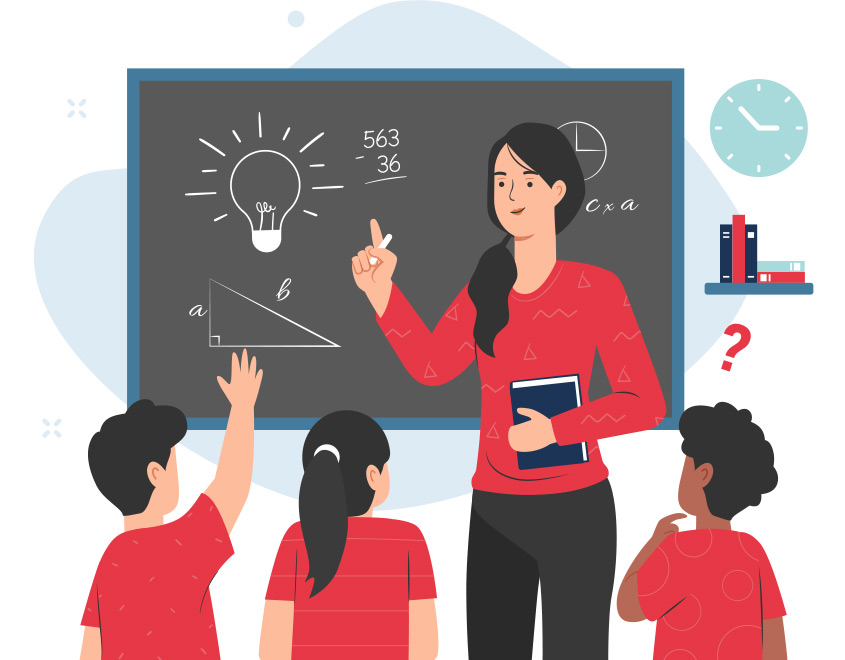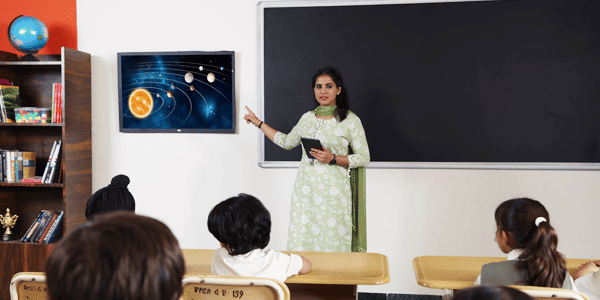Top Primary Science Tuition Singapore to Help Your Child Excel
Top Primary Science Tuition Singapore to Help Your Child Excel
Blog Article
A Comprehensive Guide to the Various Knowing Approaches in Main Science Guideline
The exploration of diverse discovering approaches in key scientific research instruction presents a chance for teachers to improve trainee involvement and understanding dramatically. By examining hands-on learning techniques, inquiry-based methods, and collective methods, we can determine efficient methods that cater to various learning styles.

Hands-On Discovering Strategies
Hands-on understanding strategies play a pivotal role in primary science instruction, engaging students in energetic expedition and trial and error. These approaches allow learners to communicate directly with phenomena and products, cultivating a much deeper understanding of clinical principles. By utilizing manipulatives, designs, and real-life experiments, teachers create an environment where pupils can observe, assume, and check their ideas.
Such techniques not just improve comprehension but additionally cultivate crucial reasoning and problem-solving skills. When trainees join activities like building straightforward equipments, planting seeds, or conducting chain reactions, they are motivated to ask questions and look for responses through their very own observations. This experiential strategy assists to demystify intricate scientific concepts, making them much more relatable and obtainable.
Moreover, hands-on knowing advertises collaboration amongst peers, as students usually operate in teams to carry out experiments or share searchings for. This team effort not just enriches their discovering experience but additionally develops necessary social skills. Eventually, incorporating hands-on methods in key science guideline fosters a long-lasting love of understanding and interest concerning the natural world, laying a solid structure for future academic searches in scientific research and past.
Inquiry-Based Knowing
Inquiry-based discovering is an educational method that motivates pupils to ask inquiries, examine phenomena, and build their very own understanding of clinical concepts. This method moves the emphasis from typical teacher-led instruction to a more student-centered experience, where learners take the effort in their academic trip. By cultivating inquisitiveness, inquiry-based learning promotes deeper engagement with the material, allowing students to explore topics in a meaningful context.
In practice, this method commonly entails hands-on experiments, monitorings, and essential reasoning tasks that straighten very closely with the clinical approach. Pupils are motivated to develop theories, style investigations, and evaluate data, which grows essential abilities such as problem-solving and logical thinking. The function of the teacher in this framework is to help with exploration, guiding pupils via the questions procedure while urging independent idea and cooperation.
In addition, inquiry-based discovering supports a sense of ownership over the learning procedure, inspiring trainees to pursue knowledge proactively. This technique not only enhances understanding of clinical ideas however also cultivates a long-lasting love for discovering, gearing up students with the abilities needed to navigate a significantly complex world.
Collaborative Discovering Approaches
Collective understanding methods encourage pupils to participate in purposeful communications with peers, promoting a common duty for their academic outcomes. In primary science guideline, these approaches motivate students to collaborate to discover scientific principles, resolve issues, and perform experiments (primary science tuition Singapore). By taking part in team activities, students can leverage varied viewpoints, permitting for richer understanding and retention of clinical expertise
One trick facet of collaborative discovering is the emphasis on communication skills. Pupils must articulate their ideas, pay attention actively to others, and work out concepts, every one of which are vital competencies in both academic and real-world contexts. This social interaction not just enhances their understanding of scientific concepts yet likewise promotes team effort and conflict resolution skills.
When trainees see the worth of their contributions within a team, they are more likely to take possession of their knowing trip. Overall, integrating joint knowing strategies in primary science guideline grows Your Domain Name a dynamic understanding setting that prepares trainees for future academic and social obstacles.
Modern Technology Assimilation in Science
The combination of innovation in main scientific research direction improves discovering experiences by providing ingenious tools and sources that support various training approaches, including collaborative knowing - primary science tuition Singapore. Using digital platforms, simulations, and interactive applications enables trainees to engage deeply with scientific concepts, assisting in a much more hands-on technique to discovering
Digital research laboratories, for example, make it possible for students to carry out experiments safely and efficiently, promoting inquiry-based understanding. These devices can imitate real-world clinical situations, enabling trainees to imagine complex procedures that would certainly be tough to duplicate in a conventional classroom setup. In addition, innovation fosters interaction and cooperation amongst Get More Info trainees, as they can share searchings for and interact on tasks with online systems.
In addition, multimedia presentations and instructional videos can improve lessons by dealing with varied discovering styles, making abstract ideas more obtainable. Data evaluation tools likewise empower trainees to collect and translate clinical data, enhancing important believing abilities. Overall, the calculated incorporation of innovation in primary science guideline not only improves involvement however additionally prepares students for a highly advanced society, outfitting them with important abilities for future clinical endeavors.
Separated Guideline Strategies
Separated guideline strategies are vital for resolving the diverse requirements of students in key science education. These methods enable teachers to customize their teaching methods to suit varying capabilities, passions, and finding out styles within the classroom. By using distinguished direction, instructors can develop a comprehensive environment that fosters involvement and enhances understanding of scientific concepts.
One reliable method is to make use of adaptable organizing, which permits pupils to team up with peers at comparable ability degrees or with varying point of views. This strategy urges peer learning and advertises essential thinking. Additionally, supplying selections in tasks can encourage trainees, allowing them to pick jobs that reverberate with their interests while still meeting curricular purposes.
Furthermore, incorporating tiered jobs is one more valuable strategy. Deliberately tasks with differing levels of intricacy, teachers can ensure that all trainees are appropriately tested, regardless of their effectiveness. Utilizing developmental assessments to determine comprehending more allows educators to adjust their educational methods dynamically, ensuring that each learner obtains the support they require.
Ultimately, carrying out differentiated straight from the source direction techniques in key science education not just enhances trainee learning results yet also grows an interest for science, preparing trainees for future academic quests.

Conclusion
In summary, effective primary scientific research guideline necessitates a multifaceted approach that encompasses hands-on learning, inquiry-based methods, and collaborative techniques. The assimilation of technology and differentiated instruction further provides to varied discovering designs, promoting an atmosphere conducive to expedition and critical reasoning.
The expedition of diverse learning methods in key scientific research direction presents a possibility for instructors to improve student involvement and understanding considerably.Hands-on learning techniques play a crucial duty in main scientific research guideline, engaging students in energetic expedition and experimentation.Inquiry-based learning is an educational technique that encourages trainees to ask concerns, explore sensations, and construct their very own understanding of scientific principles.Collaborative understanding techniques empower trainees to involve in significant communications with peers, promoting a common responsibility for their academic outcomes. Generally, incorporating joint knowing strategies in primary scientific research instruction cultivates a vibrant understanding atmosphere that prepares pupils for future scholastic and social difficulties.
Report this page